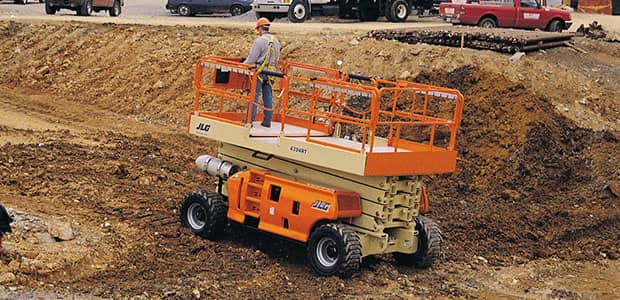A Comprehensive Method to Enhancing Performance Via Strategic Lift Repair Work Strategies
A organized and calculated approach to lift fixing and upkeep is crucial to take full advantage of performance and lessen downtime. By resolving usual lift problems, carrying out positive maintenance measures, and creating targeted fixing strategies, facilities can optimize their lift systems to run at peak efficiency levels.
Importance of Lift Efficiency Optimization
Comprehending the significance of maximizing lift efficiency is critical for making certain reliable and reputable upright transportation systems in numerous buildings and frameworks. Lifts are necessary elements of modern-day facilities, providing upright movement for owners and products within structures of varying elevations. By enhancing lift efficiency, building proprietors and facility supervisors can enhance customer experience, improve energy effectiveness, and increase general operational effectiveness.
Reliable lift performance optimization entails various aspects, including speed, ability, energy maintenance, usage, and safety requirements. Correctly maximized lifts can reduce wait times for individuals, specifically in high-traffic buildings, resulting in enhanced satisfaction and efficiency. Furthermore, maximized lifts add to energy cost savings by using innovative control systems and technologies that reduce power usage without endangering efficiency.

Identifying Common Lift Issues
Recognizing usual lift problems is essential for preserving the operational effectiveness and safety and security of vertical transport systems in structures. This issue can be indicative of troubles with the lift's electric motor, control system, or even the alignment of the lift vehicle.
Another prevalent lift problem is odd sounds originating from the lift shaft or equipment room. These noises can range from grinding or scratching noises to loud clunking noises, every one of which may signal underlying mechanical concerns that call for instant attention. In addition, frequent door breakdowns, such as doors not opening or closing effectively, can interrupt the smooth flow of passengers and position safety and security risks.
Implementing Positive Maintenance Measures
To optimize the efficiency and long life of lift systems, proactive maintenance measures play a critical duty in guaranteeing functional integrity and security. lift repair. Carrying out proactive upkeep involves systematically checking, maintenance, and repairing elements before they fall short, hence avoiding expensive downtime and possible safety and security threats. Regularly scheduled assessments can aid identify small concerns before they intensify into significant problems, eventually extending the life-span of lift systems
One trick element of proactive maintenance is creating a thorough maintenance routine based on producer suggestions and sector finest practices. This schedule should describe tasks such as lubrication, alignment checks, and component replacements at specified intervals. Furthermore, executing problem surveillance strategies, such as resonance analysis and thermal imaging, can help spot very early indicators of wear or malfunction.
Furthermore, training upkeep staff on appropriate evaluation methods and precautionary upkeep treatments is necessary for the effective application of positive upkeep procedures. By fostering a society of aggressive upkeep within a company, lift systems can operate at peak performance levels, minimizing disturbances and ensuring the safety of users.
Developing Targeted Repair Service Strategies
Upon Source examining the upkeep documents and performance data, the engineering team can establish targeted repair service strategies to resolve details issues and optimize lift system performance. These fixing strategies are tailored to the recognized troubles, making sure that sources are concentrated on fixing critical issues successfully. By focusing on repairs based on their effect here on efficiency and safety and security, the targeted repair plans assist decrease downtime and upkeep expenses while making best use of the lift system's reliability.
Creating these plans includes a thorough analysis of the lift system components, consisting of motors, cable televisions, brakes, and control systems. With this detailed assessment, the design team can establish the origin of any kind of breakdowns or deterioration in performance. This information is then made use of to produce a roadmap for the fixing procedure, describing the needed actions, timeline, and sources called for to resolve each issue effectively.
Additionally, targeted repair work strategies may include preventative measures to boost the lift system's longevity and performance. By proactively addressing possible concerns prior to they intensify, these strategies add to the general effectiveness and safety of the lift system.
Using Data-Driven Insights
Taking advantage of the power of data-driven understandings is critical in optimizing lift system performance and maintenance efficiency. By leveraging data analytics, lift drivers can make informed decisions that cause enhanced operational performance and cost savings. Via the analysis of historical efficiency trends, information and patterns can be recognized, allowing anticipating maintenance strategies to be applied. These predictive maintenance techniques aid protect against unexpected breakdowns, minimize downtime, and expand the lifespan of lift systems.

Conclusion
To conclude, optimizing lift performance is critical for making certain efficiency and safety and security in structures. By recognizing usual lift issues, applying positive upkeep steps, establishing targeted fixing plans, and using data-driven understandings, companies can enhance efficiency and lessen downtime. It is necessary to take a thorough strategy to raise repair work methods to make the most of functional efficiency and make sure the durability of lift systems.
By attending to usual lift problems, executing positive upkeep actions, and establishing targeted repair service strategies, facilities can maximize their lift systems to operate at peak performance levels.An additional widespread lift issue is weird noises rising from the lift shaft or equipment room.Upon evaluating the maintenance documents and performance data, the design group can develop targeted repair service strategies to deal with details issues and enhance lift system performance. By focusing on repairs based on their effect on performance and security, the targeted repair strategies assist minimize downtime and maintenance expenses while maximizing the lift system's reliability.
It is vital to take a detailed strategy to lift fixing approaches to make the most of functional performance and guarantee the longevity of lift systems.
Comments on “System Lift Dimensions Explained: Why They Matter for Lift Servicing”